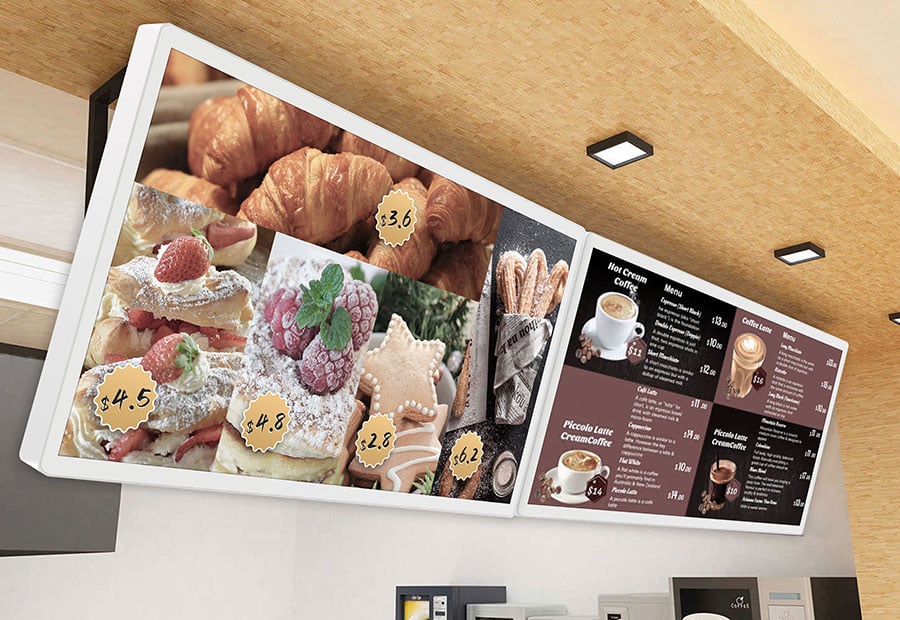The Environmental Benefits of Using Electronic Paper Displays
The Environmental Benefits of Using Electronic Paper Displays
Blog Article
Display engineering is becoming a built-in section of our daily lives, showing in from smartphones and e-readers to large-scale promotion panels. Among the varied array of large E ink display, OLED (Organic Light-Emitting Diodes), and LED (Light-Emitting Diodes) have emerged as some of the very most generally mentioned options. While each type provides a unique unique function, their differences in functions, effectiveness, and use instances make sure they are suited to certain applications. Let's take a sooner look at the essential faculties of these display technologies.
Electronic Paper displays (ePaper)
Electronic Paper displays, also known as ePaper or Electronic Ink displays, are created to copy the look and readability of traditional Ink on paper. This technology utilizes small microcapsules containing charged black and bright particles suspended in a definite fluid. When an electrical subject is applied, the particles proceed to either side of the capsule, making an obvious image. The picture stays fixed until another electric area is used, which makes it ideal for displaying text-based material such as for instance books, newspapers, and e-readers.

One of many major advantages of ePaper displays is their low energy consumption. Unlike conventional LCD
Knowledge Electronic Paper displays
A digital Paper display (ePaper) mimics the appearance of Ink on paper. Unlike conventional displays, ePaper relies on its ability to reflect surrounding light rather than emitting their own. This engineering not just decreases vision stress but additionally gives unparalleled readability in sunshine, which makes it perfect for e-readers and digital signage solutions.
One standout function of ePaper displays is their extremely reduced energy consumption. Because they just use power when changing material, ePaper monitors are highly effective and ideal for battery-powered devices. But, their refresh costs are slower compared to OLED and LED displays, limiting their applicability to fixed or minimally powerful content.
OLED displays
OLED displays are known for their spectacular visual quality, providing vivid colors, deep greens, and outstanding contrast. Each pixel within an OLED display emits its mild, removing the necessity for a backlight. That not just enables leaner, more light patterns but additionally effects in greater power effectiveness in comparison to LED in certain scenarios.
One important advantage of OLED displays is their flexibility. They may be manufactured in bent or flip-up styles, making them common in cutting-edge smartphones and wearable devices. But, OLED displays include challenges, such as for instance susceptibility to burn-in and faster lifespans compared to other technologies.
LED displays
LED displays, the most typical of the three, count on a backlit program to mild their pixels. Without as visually striking as OLED E ink signage, LEDs are very durable, long-lasting, and cost-effective. These qualities cause them to become suitable for a greater selection of applications, including TVs, computer watches, and outdoor advertising.
LED displays on average accomplish effectively when it comes to perfection, making them the ideal choice for surroundings with large normal light. Nevertheless, they flunk in reaching the same serious contrast and shade precision as OLED technology.

Final Contrast
When determining between ePaper, OLED, and LED displays, the choice depends largely on the supposed purpose. For fixed content like reading or signage, ePaper excels using its reduced power use and large presence in normal light. OLED shines in programs where vivid colors and freedom are paramount. Meanwhile, LED stays a reliable and cost-efficient option for a variety of general-purpose needs.
Each display engineering provides something special to the table, ensuring that there's an ideal selection for every situation. Understanding these differences might help consumers and organizations make educated conclusions that match their specific display requirements. Report this page